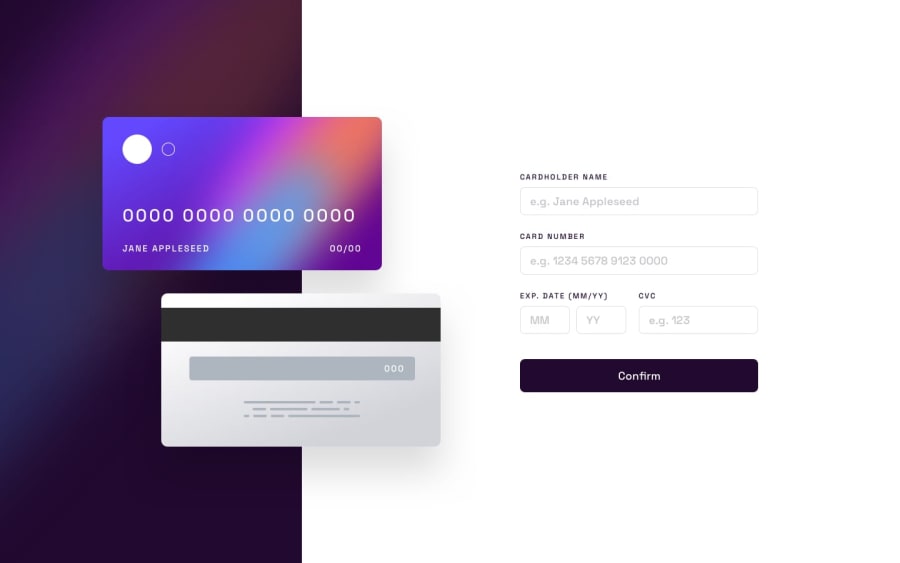
Interactive Card Details, React (State management), CSS (Grid , Flex)
Design comparison
Community feedback
- @LifeofPaksPosted over 1 year ago
- Your design looks great.
- You need to work on your positioning.
- You forget to add placeholders to your Inputs which is supposed to be a guide for users.
1@BurimPPosted over 1 year ago@LifeofPaks Thanks for your comment. Yeah I know, positioning is always the difficult part of the CSS I guess. Any recommendation would be appreciated!
1@LifeofPaksPosted over 1 year ago@BurimP The position property specifies the type of positioning method used for an element. There are five different position values:
static relative fixed absolute sticky
Elements are then positioned using the top, bottom, left, and right properties. However, these properties will not work unless the position property is set first. They also work differently depending on the position value.
An element with position: static; is not positioned in any special way; it is always positioned according to the normal flow of the page:
An element with position: relative; is positioned relative to its normal position.
Setting the top, right, bottom, and left properties of a relatively-positioned element will cause it to be adjusted away from its normal position. Other content will not be adjusted to fit into any gap left by the element.
An element with position: fixed; is positioned relative to the viewport, which means it always stays in the same place even if the page is scrolled. The top, right, bottom, and left properties are used to position the element.
A fixed element does not leave a gap in the page where it would normally have been located.
An element with position: absolute; is positioned relative to the nearest positioned ancestor (instead of positioned relative to the viewport, like fixed).
However; if an absolute positioned element has no positioned ancestors, it uses the document body, and moves along with page scrolling.
An element with position: sticky; is positioned based on the user's scroll position.
A sticky element toggles between relative and fixed, depending on the scroll position. It is positioned relative until a given offset position is met in the viewport - then it "sticks" in place (like position:fixed).
You can also check youtube to get a better understanding cos it can be confusing when you're not yet familiar
Marked as helpful0
Please log in to post a comment
Log in with GitHubJoin our Discord community
Join thousands of Frontend Mentor community members taking the challenges, sharing resources, helping each other, and chatting about all things front-end!
Join our Discord
